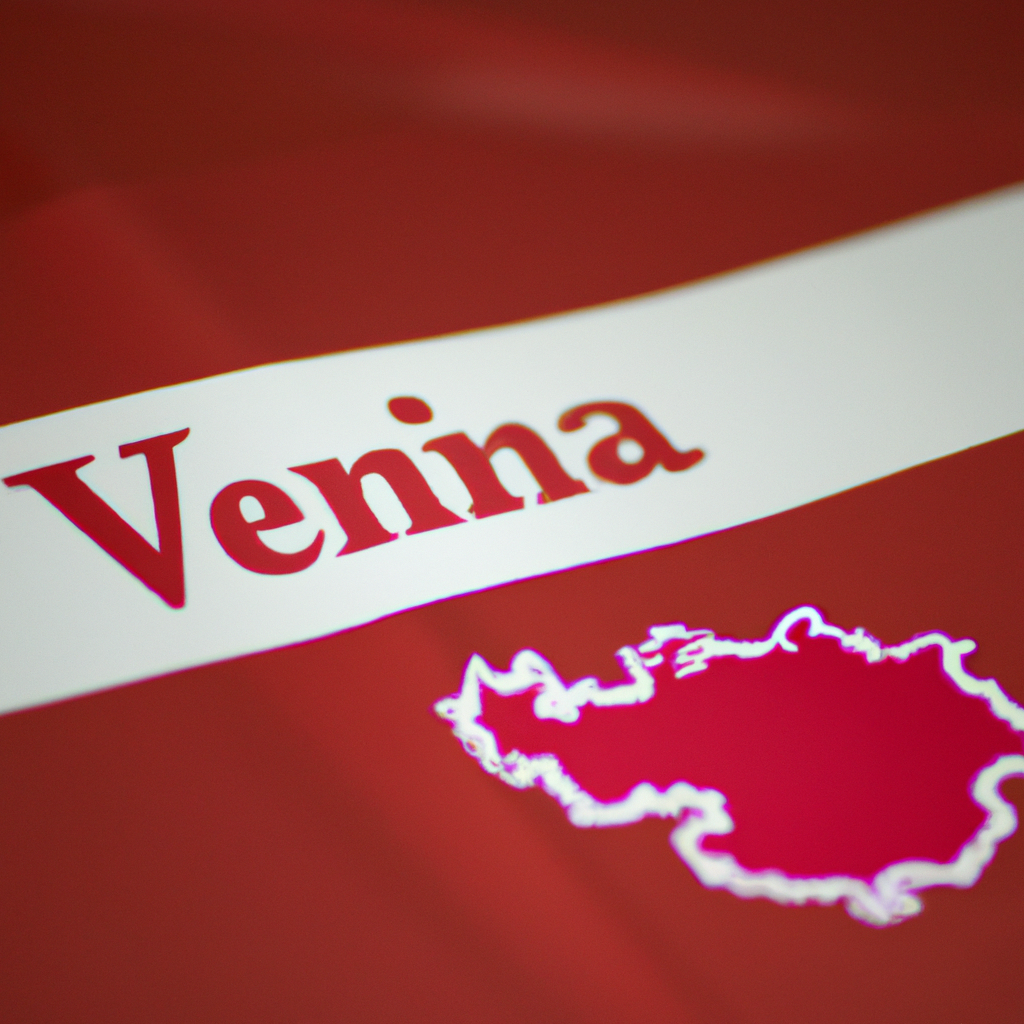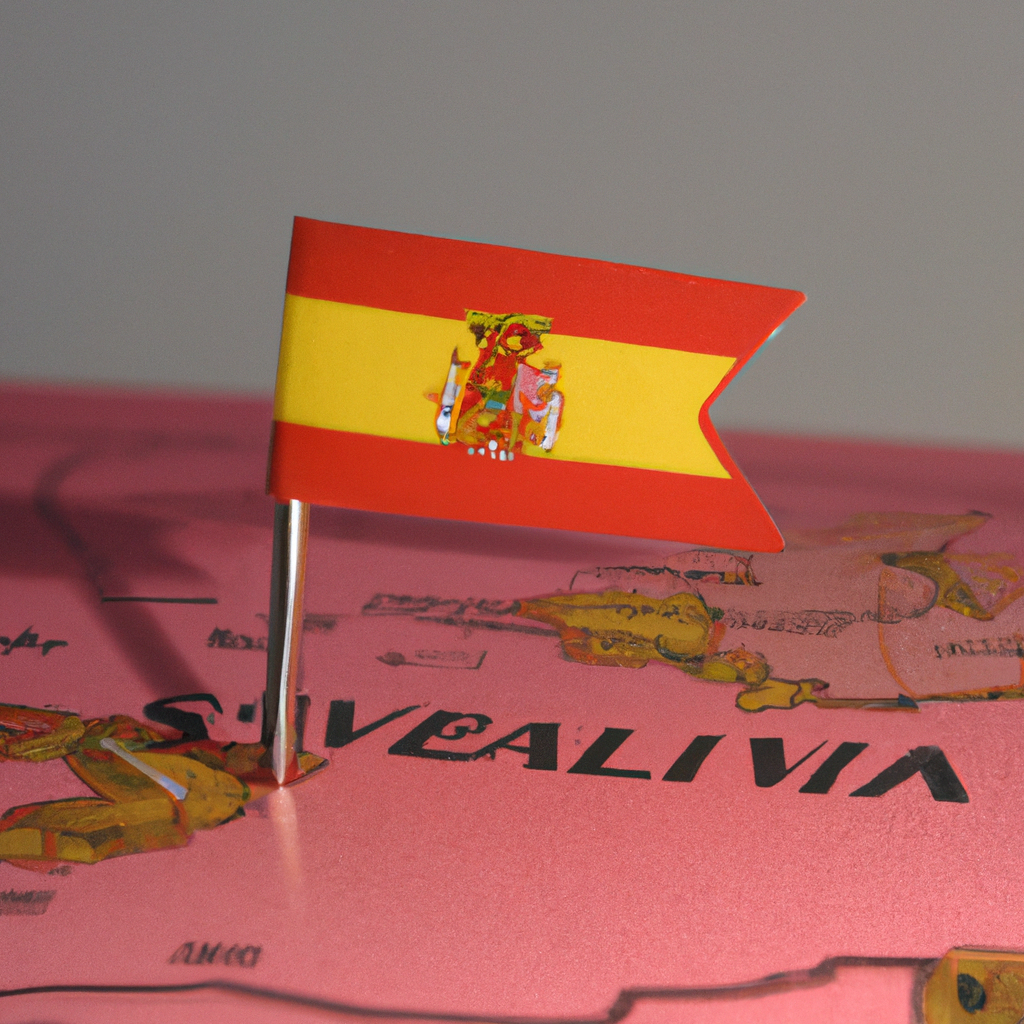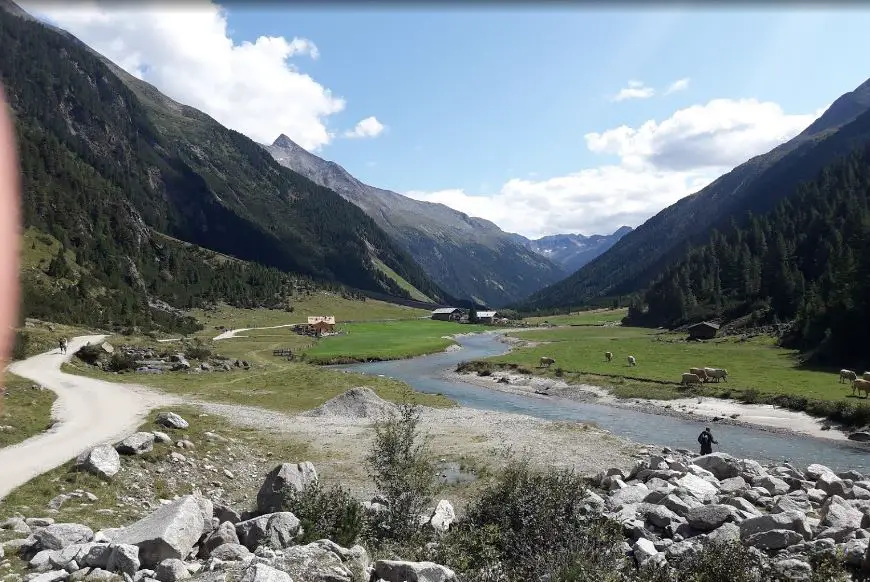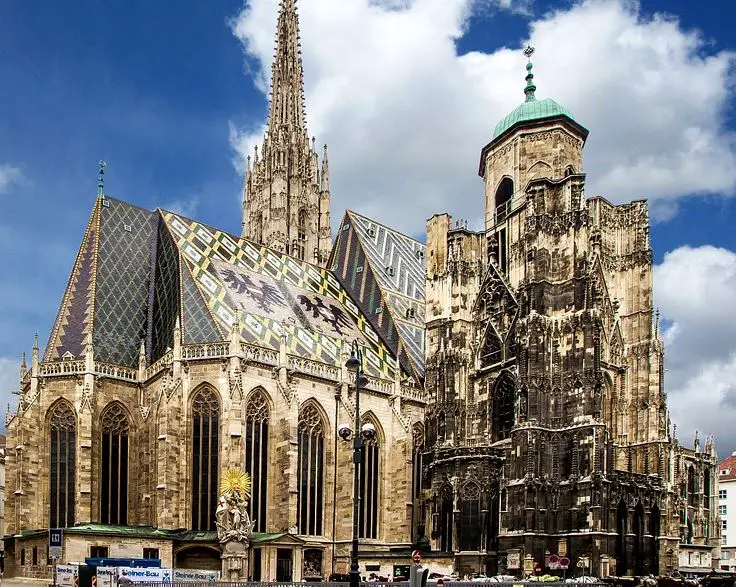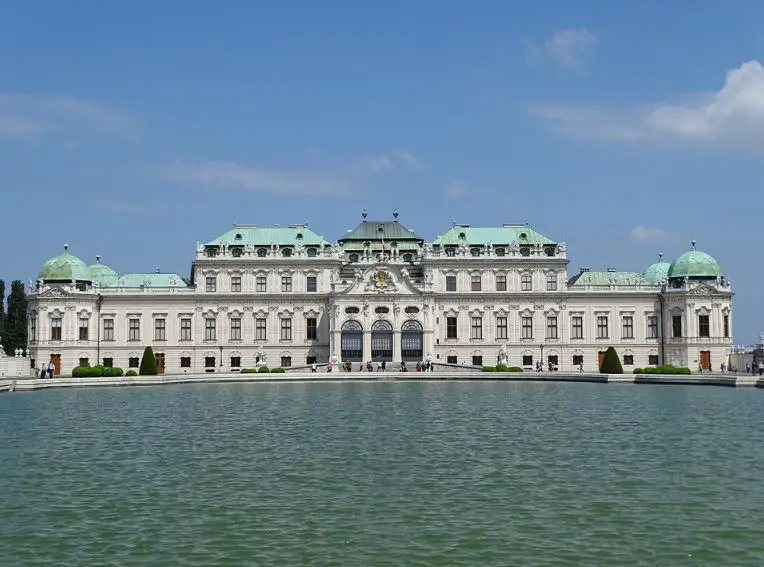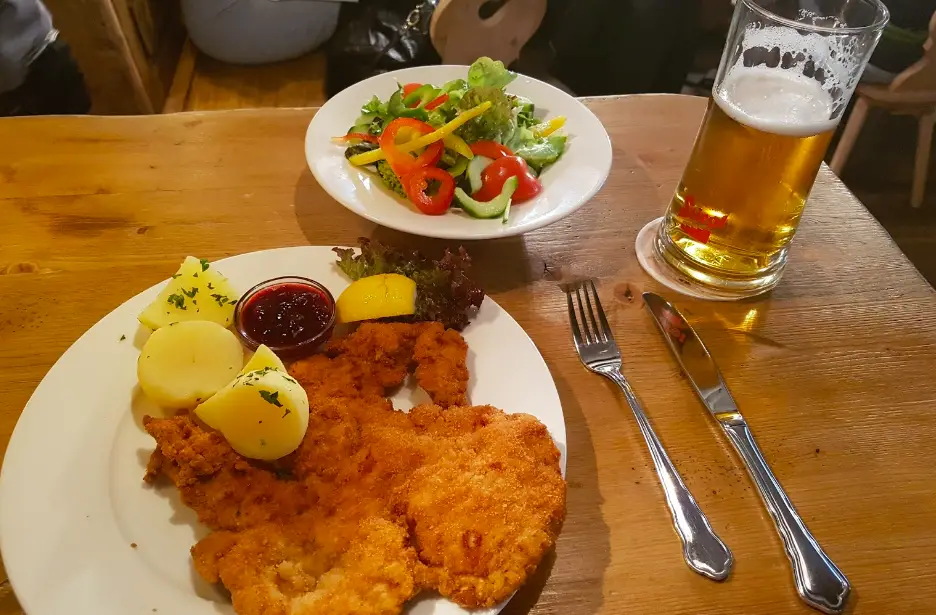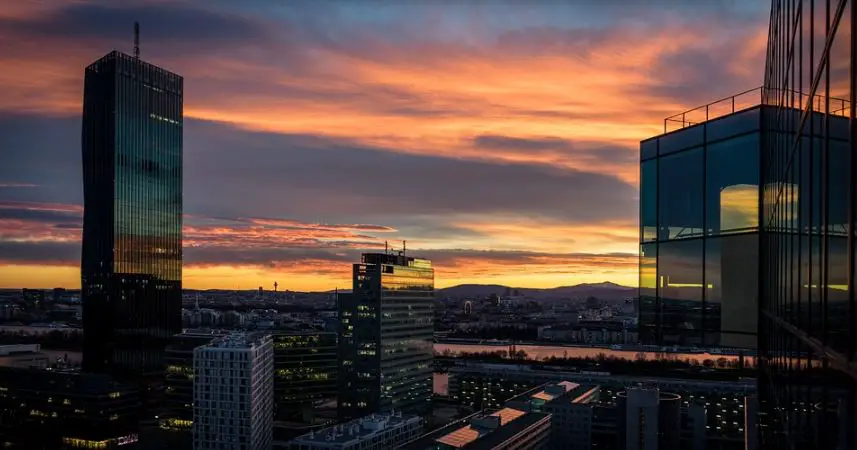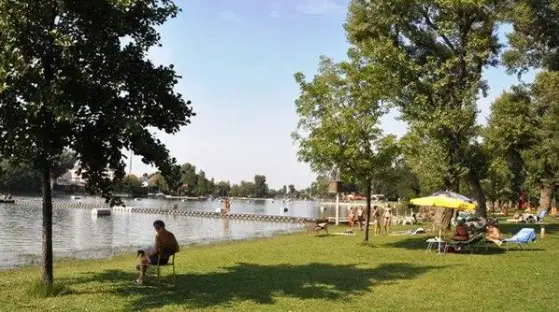Vienna, Austria: Interesting Facts,History, Things to do,Why to Visit
Post ByAdequate Travel
Vienna, Austria is a must-see vacation destination. From its fascinating history and culture to its incredible landmarks and attractions, Vienna has something for everyone. With its importance in the world of music, last Imperial dynasty, and the presence of art masterpieces, Vienna is an awe-inspiring city. Throughout its colorful history, Vienna has established itself as a place of culture and discovery - a mecca for travelers looking for something new and different. In this blog, we will explore the interesting facts, history, things to do and why to visit Vienna, Austria.Learn about Vienna's rich culture, fabulous attractions, and amazing food and get inspired by stories of travelers who visited the city. So, grab your planner and let’s start planning your unforgettable and unique stay in Vienna!
Austria, officially known as the Republic of Austria, is a landlocked country located in Central Europe. It is bordered by Germany, Czech Republic, Slovakia, Hungary, Slovenia, Italy, Switzerland, and Liechtenstein. Austria has a population of approximately 8.9 million people. The country is famous for its stunning Alpine landscapes, historic cities, and rich cultural heritage.Austria has a parliamentary representative democracy, with the President as the head of state and the Chancellor as the head of government. The capital city is Vienna, which is also the largest city in the country. Vienna is known for its Imperial architecture, music, and art scene. Other major cities include Graz, Linz, and Salzburg.Austria has a highly developed economy and is known for its strong social welfare system. Key industries in Austria include manufacturing, tourism, and services. The country is also renowned for its high quality of life, excellent healthcare, and education system.Austria has a diverse cultural heritage, influenced by various neighboring countries and historical events. The country is known for its classical music, with famous composers like Mozart, Beethoven, and Strauss having ties to Austria. It also hosts several cultural events, such as the Salzburg Festival, which celebrates music and theater.Tourism plays a significant role in Austria's economy, as the country attracts visitors with its natural beauty, historical landmarks, and ski resorts. Popular tourist destinations include the Schönbrunn Palace, Hallstatt, Innsbruck, and the Wachau Valley.Austria is a member of the European Union, United Nations, and several other international organizations. The country actively participates in global affairs and promotes peace, sustainability, and human rights.Explore the popular places in austria, and immerse yourself in its vibrant culture.
Interesting facts
Historical Landmarks
Austria is known for its rich history and stunning architectural landmarks. Here are some interesting facts about Austria's historical landmarks:
Hofburg Palace
- Hofburg Palace is a magnificent imperial palace located in the heart of Vienna. It has been the residence of the Habsburg dynasty for over 600 years.
- The palace complex consists of multiple buildings and spans an area of 59 acres. It showcases various architectural styles, including Gothic, Renaissance, Baroque, and Rococo.
- Hofburg Palace has housed numerous historical figures, including Empress Maria Theresa and Emperor Franz Joseph I. Today, it serves as the official residence of the President of Austria and houses several museums and the famous Spanish Riding School.
Schönbrunn Palace
- Schönbrunn Palace is another iconic landmark in Vienna, known for its magnificent Baroque architecture and sprawling gardens.
- This palace was the summer residence of the Habsburg rulers and has witnessed significant historical events, including the Congress of Vienna in 1814–1815.
- It features over 1,400 rooms, including the grand State Rooms, which were used for official functions and ceremonies.
Salzburg Fortress
- The Salzburg Fortress, also known as Hohensalzburg Fortress, is one of the largest fully preserved medieval castles in Europe.
- It is strategically located atop a hill overlooking the city of Salzburg and offers breathtaking panoramic views.
- The fortress was built in the 11th century and expanded over the centuries. It served as a stronghold and residence for the local prince-archbishops. Today, it is a major tourist attraction and houses museums and event venues.
Melk Abbey
- Melk Abbey, located in the town of Melk, is an impressive Benedictine abbey perched on a rocky outcrop above the Danube River.
- Established in the 11th century, the abbey is a masterpiece of Baroque architecture and is known for its stunning frescoes, library, and beautiful gardens.
- It has played a significant role as a religious, cultural, and educational center throughout history. Today, it is still an active monastery and welcomes numerous visitors from around the world.
From museums to parks,austria tourist attractions offer something for everyone, making it a versatile destination for all type of tourists.History of Austria
Located in Central Europe, Austria has a rich and diverse history that spans over centuries. Here is a detailed overview of Austria's historical journey:
1. Early History:
Austria's history dates back to the Paleolithic era, with evidence of human settlements in the region as early as 8000 BCE. During ancient times, Austria was inhabited by Celtic tribes and later came under the Roman Empire. The Roman presence in Austria lasted for several centuries, leaving behind archaeological sites such as Carnuntum.
2. Medieval Period:
In the early Middle Ages, Austria was part of the Carolingian Empire. This period saw the emergence of Bavarian and Frankish rulers in the region. The Babenberg dynasty played a significant role during this time, ruling over Austria from the late 10th century until the early 13th century.
3. Habsburg Empire:
One of the most influential periods in Austrian history began with the rise of the Habsburg dynasty. The Habsburgs expanded their power through strategic marriages, diplomacy, and military campaigns. They established the Habsburg Empire, which eventually included territories in present-day Austria, Hungary, Croatia, Czech Republic, and more. Under the Habsburg rule, Austria became a major European power and experienced cultural flourishing, particularly during the Renaissance and Baroque periods.
4. Austro-Hungarian Empire:
In the 19th century, Austria was known as the Austro-Hungarian Empire or the Dual Monarchy. This multinational empire was formed through the Austro-Hungarian Compromise of 1867, which established a dual monarchy with separate governments for Austria and Hungary. During this time, Austria-Hungary faced challenges due to nationalist movements within its diverse ethnic groups and tensions with neighboring countries.
5. World War I and Dissolution:
Austria-Hungary was a major player in World War I. The war had a devastating impact on the empire, leading to its dissolution in 1918. The end of the war marked the emergence of the Republic of German Austria, which later became the First Austrian Republic.
6. World War II and Post-War Era:
Austria was annexed by Nazi Germany in 1938 during World War II. After the war, Austria was occupied by Allied forces and divided into zones. The country regained independence in 1955 and became a neutral nation. Austria joined the European Union in 1995 and has since been an active member.
Examples in P tag:
- Austria's history begins in the Paleolithic era, with human settlements dating back to 8000 BCE.
- The Babenberg dynasty ruled over Austria during the medieval period.
- The Habsburg dynasty established the powerful Habsburg Empire.
- Austria-Hungary was formed in the 19th century through the Austro-Hungarian Compromise of 1867.
- Austria faced annexation by Nazi Germany during World War II and regained independence in 1955.Exploring the rich heritage of historical sites in austria is a journey through time and culture.
Famous Things in Austria
1. Vienna
Vienna, the capital city of Austria, is known for its rich cultural heritage and stunning architecture. It is home to various iconic landmarks, such as:
- St. Stephen's Cathedral: A Gothic masterpiece and one of the most important landmarks in Vienna.
- Schönbrunn Palace: An exquisite Baroque palace and UNESCO World Heritage site.
- Hofburg Palace: The imperial residence and seat of government of the Habsburg dynasty.
- Belvedere Palace: A stunning palace complex that houses the famous artwork "The Kiss" by Gustav Klimt.
2. Salzburg
Salzburg is a city known for its picturesque beauty, Mozart heritage, and being the birthplace of the legendary composer Wolfgang Amadeus Mozart. Some prominent attractions in Salzburg include:
- Hohensalzburg Fortress: One of the largest castles in Europe, offering breathtaking views of the city.
- Mirabell Palace: A stunning Baroque palace and gardens, featured in the movie "The Sound of Music."
- Salzburg Cathedral: A magnificent cathedral with its iconic dome and Mozart's baptismal font.
- Mozart's Birthplace: A museum located in the house where Mozart was born, showcasing his life and works.
3. Innsbruck
Innsbruck, the capital of Tyrol, is a renowned destination for both summer and winter sports. It offers a mix of historic sights and natural beauty, including:
- Golden Roof: A landmark building with a golden roof, symbolizing the city, located in the charming Old Town.
- Swarovski Crystal Worlds: A dazzling museum and art installation by Swarovski, showcasing crystal artworks.
- Nordkette Cable Car: A cable car ride that takes you up to the stunning Alpine scenery, offering panoramic views of Innsbruck.
- Bergisel Ski Jump: A famous ski jump that hosted the Winter Olympics, offering a panoramic view and a museum documenting its history.
4. Danube River
The Danube River is the second-longest river in Europe and flows through Austria, offering stunning views and recreational activities. Some popular attractions along the Danube in Austria include:
- Wachau Valley: A picturesque UNESCO World Heritage site famous for its terraced vineyards, castles, and charming towns.
- Melk Abbey: A majestic Benedictine abbey situated above the Danube, famous for its stunning architecture and library.
- Vienna Woods: A beautiful forested area near Vienna, perfect for leisurely walks, hiking, and picnics.
- Donauturm: The tallest structure in Austria, providing a panoramic view of Vienna and the Danube River.
Culture of Austria
Austria is known for its rich cultural history and diverse traditions. The country has a vibrant arts scene, classical music heritage, and a strong appreciation for culinary delights. Here are some key aspects of Austrian culture:
1. Classical Music:
Austria is the birthplace of famous composers such as Wolfgang Amadeus Mozart, Johann Strauss, and Franz Schubert. Classical music is deeply ingrained in Austrian culture, and the country is home to renowned music festivals and opera houses. The Vienna Philharmonic Orchestra is widely recognized as one of the best orchestras in the world.
2. Art and Architecture:
Austrians have a long-standing tradition of producing exceptional art and architecture. The Baroque style, popular during the 17th and 18th centuries, can be seen in numerous palaces, churches, and historical buildings across the country. The works of famous artists like Gustav Klimt, Egon Schiele, and Friedensreich Hundertwasser have also left a lasting impact on Austrian culture.
3. Culinary Delights:
Austrian cuisine is renowned for its hearty and flavorsome dishes. From schnitzels to strudels, food plays an important role in Austrian culture. The country boasts traditional dishes such as Wiener Schnitzel (breaded and fried veal or pork), Sachertorte (chocolate cake), and Tafelspitz (boiled beef). Austria is also famous for its coffee culture, with Viennese coffee houses offering a cozy atmosphere to enjoy a cup of coffee and a slice of cake.
4. Winter Sports:
Austria's stunning alpine landscapes make it a prime destination for winter sports enthusiasts. Skiing, snowboarding, and ice skating are popular activities during the winter months. The country has hosted numerous international skiing competitions and has produced many world-class athletes in winter sports.
5. Folk Traditions:
Austria has a rich tradition of folk culture, with regional customs and celebrations being an integral part of people's lives. Each region has its own unique folk dances, traditional costumes, and folk music. Festivals such as the Vienna Opera Ball and the Salzburg Festival showcase the elegance and charm of Austrian folk traditions.
Overall, Austrian culture is a blend of classical music, art, culinary delights, and winter sports. The country's rich heritage and traditions have shaped its identity and continue to play a significant role in shaping its cultural landscape.Immerse yourself in the local culture by exploring austria's top-rated tourist attractions.Cuisine of Austria
Austria is known for its rich culinary heritage, with a cuisine that is influenced by its neighboring countries such as Germany, Hungary, Italy, and the Balkan states. The cuisine of Austria is diverse, hearty, and often incorporates local and seasonal ingredients. Here are some key characteristics and examples of Austrian cuisine:1. Viennese Cuisine
Vienna, the capital city of Austria, has its own unique culinary traditions. The city is renowned for its coffee house culture and pastries. Examples of Viennese cuisine include:
- Wiener Schnitzel: A breaded and fried veal or pork cutlet.- Sachertorte: A famous Viennese chocolate cake with a thin layer of apricot jam.- Tafelspitz: Boiled beef served with horseradish and traditional side dishes like potatoes and creamed spinach.2. Austrian Pastries
Austria is famous for its wide selection of delicious pastries and desserts. These treats are often enjoyed with a cup of coffee as part of the traditional coffee house culture. Examples of Austrian pastries include:
- Apfelstrudel: A pastry filled with apples, raisins, and cinnamon, served with vanilla sauce or whipped cream.- Linzer Torte: A tart made from a rich buttery dough filled with raspberry jam and topped with a lattice crust.- Kaiserschmarrn: A shredded pancake that is caramelized with sugar and served with fruit compote or stewed plums.3. Meat and Sausages
Austrian cuisine is known for its meat dishes, especially pork, beef, and game meats. Sausages are also popular and come in various sizes and flavors. Examples of meat-based dishes and sausages in Austrian cuisine include:
- Gröstl: A hearty dish made with chopped leftover roast meat, potatoes, and onions, often served with a fried egg on top.- Leberkäse: A type of Austrian meatloaf made with finely ground beef and pork, typically served in a bread roll with mustard.- Frankfurter Würstel: A popular Viennese sausage that is boiled and served with mustard and horseradish.4. Traditional Austrian Specialties
Austria has a variety of traditional dishes that reflect its rural heritage and regional diversity. These specialties often feature locally sourced ingredients and unique cooking techniques. Examples of traditional Austrian dishes include:
- Kasnocken: Small dumplings made with flour and cheese, typically served with sautéed onions and a salad.- Knödel: Bread or potato dumplings that are commonly served as a side dish or as part of a main course.- Kärntner Nudeln: Pasta pockets filled with a mixture of bacon, onions, and potatoes, served with melted butter and cheese.In conclusion, Austrian cuisine offers a wide range of flavors and dishes that showcase the country's culinary traditions. From the famous Wiener Schnitzel to delightful pastries like Apfelstrudel, there is something to satisfy every palate in Austria. Whether you are indulging in a coffee house experience or exploring traditional Austrian specialties, the country's cuisine is sure to leave a lasting impression.austria tourist attractions offer a diverse range of experiences for every traveler.Exploring Vienna
Vienna, the capital city of Austria, offers various attractions and activities for visitors to enjoy. Some must-visit places include:
1. Schönbrunn Palace
One of Vienna's most iconic landmarks, Schönbrunn Palace is worth exploring. This baroque-style palace features stunning gardens, the Gloriette structure, a maze, and the Tiergarten Schönbrunn, which is the oldest zoo in the world.
2. St. Stephen's Cathedral
The St. Stephen's Cathedral is a magnificent Gothic structure located in the heart of Vienna. It is known for its stunning architecture, intricate details, and the opportunity to climb the South Tower for panoramic views of the city.
3. Hofburg Palace
Another grand palace in Vienna, the Hofburg Palace was the former imperial palace and is now home to various museums, including the Sisi Museum and the Imperial Apartments. Visitors can learn about the history and culture of the Habsburg dynasty.
4. Belvedere Palace
The Belvedere Palace consists of two palaces, the Upper Belvedere and the Lower Belvedere. It houses an impressive collection of Austrian art, including works by Gustav Klimt, Egon Schiele, and Oskar Kokoschka.
5. Visit a traditional coffee house
Austria is known for its coffee culture, and trying a traditional Viennese coffee house is a must. These coffee houses offer a cozy atmosphere, delicious cakes, and a wide variety of coffee specialties. Café Central and Café Sacher are popular choices.
6. Take a ride on the Vienna Giant Ferris Wheel
The Vienna Giant Ferris Wheel, or Wiener Riesenrad, is an iconic symbol of the city. It offers stunning panoramic views of Vienna from its cabins, and at night, the illuminated Ferris wheel adds to the beauty of the skyline.
7. Explore the Naschmarkt
The Naschmarkt is a vibrant open-air market in Vienna, known for its diverse range of food stalls, international cuisine, fresh produce, spices, and unique souvenirs. It's a great place to experience the local culture and taste different culinary delights.
8. Visit the Albertina Museum
The Albertina Museum is home to an extensive art collection that includes works by famous artists such as Monet, Picasso, and Dürer. The museum also offers breathtaking views of Vienna from its balcony.
These are just a few examples of the many things to do in Austria. The country has a rich cultural heritage and stunning natural landscapes, so there are plenty of options for exploration and enjoyment.
When planning your trip to austria, be sure to include the best things to do in austria, which encompass a wide range of cultural experiences.Climate of Austria
Austria has a temperate climate with four distinct seasons. The climate is influenced by its location in Central Europe and the presence of the Alps. Here are some key features of Austria's climate:
1. Continental Influence
The country experiences a continental climate, characterized by cold winters and warm summers. Inland areas, especially in the east, have more extreme temperature variations compared to regions near the Alps. The average temperature ranges from around -5°C (23°F) in winter to 25°C (77°F) in summer.
2. Alpine Climate
The Alpine region of Austria has a mountain climate. It is cooler and experiences more precipitation compared to the rest of the country. The temperature decreases with altitude, and snowfall is common in the higher elevations during winter. The alpine climate is ideal for winter sports and attracts tourists from around the world.
3. Rainfall Distribution
The rainfall in Austria is relatively evenly distributed throughout the year, although some regions in the east and south tend to be drier. The mountainous areas receive more precipitation due to orographic effects - as moist air rises over the mountains, it cools and condenses, leading to increased rainfall.
4. Summer Thunderstorms
In summer, Austria experiences thunderstorms, especially in the afternoons and evenings. These storms can be intense, bringing heavy rainfall, hail, and strong winds. However, they are usually short-lived and followed by clear skies.
5. Climate Change Impact
Austria, like many other countries, is also facing the effects of climate change. Increasing temperatures have led to the retreat of glaciers, affecting winter tourism and water supply. Additionally, changes in precipitation patterns and the occurrence of extreme weather events pose challenges for agriculture and infrastructure.
In conclusion, Austria's climate is characterized by a continental influence with distinct seasons. The alpine region experiences cooler temperatures and more precipitation compared to other parts of the country. The rainfall is relatively evenly distributed throughout the year, with summer thunderstorms being common. However, the country is also feeling the impact of climate change, which is affecting various sectors of the economy.Exploring the city's diverse neighborhoods is one of the best ways to discover the best austria attractions, each with its own character and charm.Popular Activities in Austria
Hiking in the Austrian Alps: Austria is home to some of the most stunning landscapes in Europe, including the majestic Alps. Hiking is a popular activity for both locals and tourists alike. The country offers numerous well-marked trails for all levels of experience, ranging from short walks to multi-day treks. Some popular hiking destinations include the Hohe Tauern National Park, the Zillertal Alps, and the Dachstein Mountains.
Exploring Vienna's Cultural Treasures: The capital city of Vienna is known for its rich history and cultural heritage. From visiting magnificent palaces like Schönbrunn Palace and Belvedere Palace to exploring world-class museums like Kunsthistorisches Museum and the Albertina, there is no shortage of cultural treasures to discover in Vienna. Additionally, attending a classical music concert or opera performance in one of the city's famous venues, such as the Vienna State Opera or Musikverein, is a must-do activity.
Visiting Salzburg for its Musical Heritage: Salzburg, birthplace of renowned composer Wolfgang Amadeus Mozart, is a city that resonates with music. Visitors can explore Mozart's childhood home, visit the iconic Salzburg Cathedral, and attend performances at the famous Salzburg Festival. The city also offers stunning views of the surrounding Alps, with opportunities for hiking and mountain biking in the nearby countryside.
Sampling Austrian Cuisine and Wine: Austrian cuisine is a blend of influences from its neighboring countries, with dishes like Wiener Schnitzel (breaded and fried veal cutlet) and Sachertorte (chocolate cake with apricot jam) being popular choices. Food lovers can explore traditional Austrian cuisine at local taverns called "Wirtshaus" or indulge in fine dining at Michelin-starred restaurants. Austria is also known for its excellent wine production, particularly in regions like Styria and Burgenland, where visitors can enjoy wine tours and tastings.
Winter Sports in the Austrian Alps: With its snowy peaks and well-developed ski resorts, Austria is a paradise for winter sports enthusiasts. Skiing, snowboarding, and cross-country skiing are just a few of the activities on offer. Popular destinations include St. Anton am Arlberg, Kitzbühel, and Zell am See. Ski schools and rental shops are readily available, making it accessible for both beginners and experienced skiers.
Plan your trip with a list of the best things to do in austria, catering to all interests.Nightlife in Austria
Austria is known for its vibrant nightlife, with plenty of options for those who enjoy partying, live music, and cultural events. The country offers a diverse selection of venues and experiences, catering to different tastes and preferences.
1. Vienna
Vienna, the capital city of Austria, is a hub of nightlife activities. The city boasts numerous bars, clubs, and lounges where visitors can enjoy a night out. The Bermuda Triangle, located in the city center, is famous for its nightlife scene, offering a variety of bars and clubs to choose from.
2. Salzburg
Salzburg, known for its rich musical heritage, offers a different kind of nightlife experience. The city offers a range of classical music concerts and performances, especially during the summer months when the Salzburg Festival takes place. Visitors can enjoy operas, ballets, and orchestral performances in stunning venues like the Salzburg Cathedral and the Horse Pond.
3. Innsbruck
Innsbruck, located in the picturesque Austrian Alps, also offers a vibrant nightlife scene. The city has a mix of traditional Austrian pubs, trendy cocktail bars, and modern nightclubs. Visitors can enjoy live music performances, themed parties, and a variety of drinks and snacks.
4. Graz
Graz, the second-largest city in Austria, has a lively student population, contributing to its vibrant nightlife. The city offers a wide range of bars, clubs, and music venues that cater to different tastes, from popular mainstream music to underground and alternative scenes.
5. Linz
Linz, located on the banks of the Danube River, has a growing nightlife scene. The city offers a mix of trendy bars, clubs, and live music venues. It hosts various events and festivals throughout the year, attracting both locals and visitors.
Conclusion
Austria offers a rich and diverse nightlife scene, with each city providing unique experiences. Whether you are interested in trendy clubs, live music, classical performances, or traditional Austrian pubs, there is something for everyone in Austria's nightlife.
Explore the popular places in austria, and immerse yourself in its vibrant culture.Reasons to Visit Austria
Austria is a country located in Central Europe and offers a wide range of attractions and experiences for visitors. Here are several reasons why you should consider visiting Austria:
1. Stunning Alpine Landscapes
Austria is known for its beautiful alpine landscapes, with majestic mountains, crystal-clear lakes, and charming villages. The country is home to several famous mountain ranges, such as the Austrian Alps and the Hohe Tauern National Park. These picturesque landscapes are perfect for outdoor activities such as hiking, skiing, and mountain biking.
2. Rich History and Culture
Austria has a rich history and vibrant culture that is reflected in its architecture, art, music, and traditions. The country is known for its imperial palaces, baroque churches, and medieval castles. Vienna, the capital city, is a UNESCO World Heritage site and offers numerous historical and cultural attractions, including the Hofburg Palace, St. Stephen's Cathedral, and the Vienna State Opera.
3. Vienna's Musical Legacy
Vienna is often referred to as the "City of Music" due to its significant musical legacy. The city was home to renowned composers such as Mozart, Beethoven, and Strauss. Visitors can enjoy classical music concerts, opera performances, and explore the various music museums and historic venues, including the iconic Vienna State Opera and the Mozart House.
4. Historical Charm of Salzburg
Salzburg, the birthplace of Mozart and another UNESCO World Heritage site, is a city that exudes historical charm. The well-preserved old town of Salzburg, with its narrow streets and stunning architecture, will transport you back in time. The city is also famous for its annual Salzburg Festival, showcasing world-class performances in music and theater.
5. Culinary Delights
Austria offers a diverse culinary scene, influenced by its neighboring countries like Germany, Hungary, and Italy. Traditional Austrian dishes such as Wiener Schnitzel, Sacher Torte, and Apfelstrudel are must-tries. Additionally, the country is famous for its excellent wine production, especially in regions like Wachau and Burgenland.
6. Outdoor Activities
Besides the stunning alpine landscapes, Austria provides numerous opportunities for outdoor activities. From skiing and snowboarding in winter to hiking, cycling, and watersports in summer, the country has something for everyone. The Danube River offers scenic bike paths, and the Neusiedler See is perfect for sailing and windsurfing.
7. Christmas Markets
Austria is known for its enchanting Christmas markets, where you can experience the festive atmosphere and find unique handmade gifts, traditional culinary treats, and hot mulled wine. Vienna, Salzburg, and Innsbruck host some of the most famous Christmas markets in the country.
In conclusion, Austria offers a combination of natural beauty, rich history, cultural treasures, and culinary delights. Whether you are interested in exploring stunning alpine landscapes, immersing yourself in history and music, indulging in traditional Austrian cuisine, or enjoying outdoor activities, Austria has something to offer for every traveler.Whether you're a history buff or an adventure seeker, austria has an attraction for you. So, don't miss the chance to visit popular places in austriaNumber of Days Required to Visit Austria
Austria is a beautiful country in Central Europe, known for its stunning landscapes, rich history, and vibrant culture. The number of days required to visit Austria may vary depending on various factors, such as your travel preferences, budget, and the places you want to explore. However, a comprehensive trip to Austria usually requires at least 7-10 days to fully experience its top attractions and immerse yourself in its enchanting ambiance.
1. Exploring Vienna (3-4 days)
Start your Austrian journey by spending a few days in Vienna, the capital city. Vienna is renowned for its imperial palaces, magnificent architecture, and thriving arts scene. Some must-visit attractions include the Schönbrunn Palace, St. Stephen's Cathedral, Belvedere Palace, and Hofburg Palace. You can also savor delicious Viennese cuisine and attend a classical music performance in one of the city's famous concert halls.
2. Discovering Salzburg (2-3 days)
After Vienna, head to Salzburg, the birthplace of Mozart and a UNESCO World Heritage Site. Spend a couple of days exploring the charming old town, visiting iconic sites like Hohensalzburg Fortress, Mirabell Palace, and St. Peter's Abbey. Don't miss out on a visit to the Sound of Music tour to discover the filming locations of this famous musical.
3. Experiencing the Austrian Alps (2-3 days)
To truly appreciate the natural beauty of Austria, allocate a few days to explore the breathtaking Austrian Alps. Visit destinations like Innsbruck, Zell am See, or the stunning Grossglockner High Alpine Road. Engage in outdoor activities such as hiking, skiing, or simply enjoy the picturesque mountainous landscapes.
4. Optional Day Trips
If you have more time, consider taking day trips from Vienna or Salzburg to explore nearby attractions like Wachau Valley, Hallstatt, or the picturesque Lake District. These day trips allow you to witness the country's stunning countryside and historic towns, adding another dimension to your Austrian experience.
Overall, spending around 7-10 days in Austria provides a well-rounded experience, allowing you to explore the main cities, immerse yourself in the culture, and witness the captivating beauty of the Alps. However, it is always recommended to plan your itinerary based on personal preferences and the time available for your trip.
Discover the untold stories behind austria unique facts, and historical treasures.Significance of Austria
Austria is a country located in Central Europe. It has a rich history and cultural heritage, making it significant in various aspects.
Geographical Location
Austria's geographical location is significant as it serves as a bridge between Western and Eastern Europe. It shares borders with eight countries, including Germany, Italy, Switzerland, Hungary, Czech Republic, Slovenia, Slovakia, and Liechtenstein. This makes Austria a hub for cultural, economic, and political exchanges between these countries.
Cultural Heritage
Austria has a long-standing tradition of cultural excellence. It is famously known for being the birthplace of several influential figures, including Wolfgang Amadeus Mozart, Franz Schubert, and Sigmund Freud. The country has made significant contributions to the fields of music, art, literature, and philosophy, enriching European culture as a whole.
Tourism
Austria's natural beauty and architectural wonders make it a popular tourist destination. The country offers diverse landscapes, including the stunning Austrian Alps, crystal-clear lakes, and charming towns. The cities of Vienna, Salzburg, and Innsbruck are renowned for their historical landmarks, museums, and cultural events, attracting millions of visitors each year.
Economic Stability
Austria has a highly developed and stable economy. It is known for its strong banking sector, high standard of living, and low unemployment rates. The country has a reputation for sound economic policies, innovation, and specialization in sectors such as engineering, technology, and tourism. Its strategic location has also facilitated trade and business relations with neighboring countries.
Political Neutrality
Austria has a long-standing policy of neutrality. It has stayed outside military alliances and avoids taking sides in international conflicts. This neutrality has been significant in maintaining peace and stability in the region.
In conclusion, Austria's geographical location, cultural heritage, tourism industry, economic stability, and political neutrality contribute to its overall significance. It plays a vital role as a meeting point between different European countries, has enriched European culture through its arts and literature, attracts tourists from around the world, offers a stable economy, and contributes to regional peace and stability through its neutral stance.From hidden gems to iconic landmarks, austria has something for every traveler's taste.Q1: What is the capital city of Austria?
The capital city of Austria is Vienna. Vienna is located in the northeastern part of the country and is the cultural, economic, and political center of Austria. It is known for its stunning architecture, rich history, and vibrant music scene.
Example: Vienna is famous for its iconic landmarks such as St. Stephen's Cathedral, Belvedere Palace, and Schönbrunn Palace. The city is also home to numerous museums, theaters, and concert halls.
Q2: What is the official language of Austria?
The official language of Austria is German. German is spoken by the majority of the population, and it is the primary language used in government, education, and business.
Example: In daily life, you will hear people speaking various Austrian dialects, which can differ from standard German. However, most Austrians are also fluent in English, especially in urban areas and popular tourist destinations.
Q3: What is the currency of Austria?
The currency of Austria is the Euro (€). Since Austria is a member of the Eurozone, the Euro is widely accepted throughout the country. It is recommended to have some Euros with you for cash transactions, although credit cards are widely accepted in most places.
Example: If you plan to visit Austria, it's a good idea to exchange your currency for Euros before your trip. ATMs are also widely available in Austria, allowing you to withdraw Euros if needed.
Q4: What is the climate like in Austria?
Austria has a temperate continental climate, characterized by four distinct seasons. Summers (June to August) are generally warm, with temperatures ranging from 20-30°C (68-86°F). Winters (December to February) can be cold, with temperatures dropping below freezing and snowfall common, especially in alpine regions.
Example: The best time to visit Austria depends on your interests. Winter is ideal for skiing and enjoying the magical Christmas markets, while spring and autumn offer pleasant weather for outdoor activities and exploring the cities. Summer is perfect for hiking, biking, and enjoying the numerous lakes in Austria.
Q5: What are some popular tourist attractions in Austria?
Austria is a country rich in cultural and natural attractions. Some popular tourist attractions in Austria include:
1. Schönbrunn Palace in Vienna: This extravagant palace, with its stunning gardens, is a UNESCO World Heritage site.
2. The Salzburg Old Town: Known as the birthplace of Mozart, Salzburg's historic center is filled with charming architecture and cultural sites.
3. The Austrian Alps: Offering breathtaking landscapes, the Alps are perfect for outdoor activities such as skiing, hiking, and mountaineering.
4. Hallstatt: A picturesque village known for its stunning lake and beautiful alpine surroundings. It is also a UNESCO World Heritage site.
Example: These are just a few examples, and Austria has many more attractions to explore, including other historical cities like Innsbruck, Graz, and Linz, as well as stunning lakes like Wolfgangsee and Mondsee.
Uncover the best austria attractions that will leave you awe-inspired and wanting more.